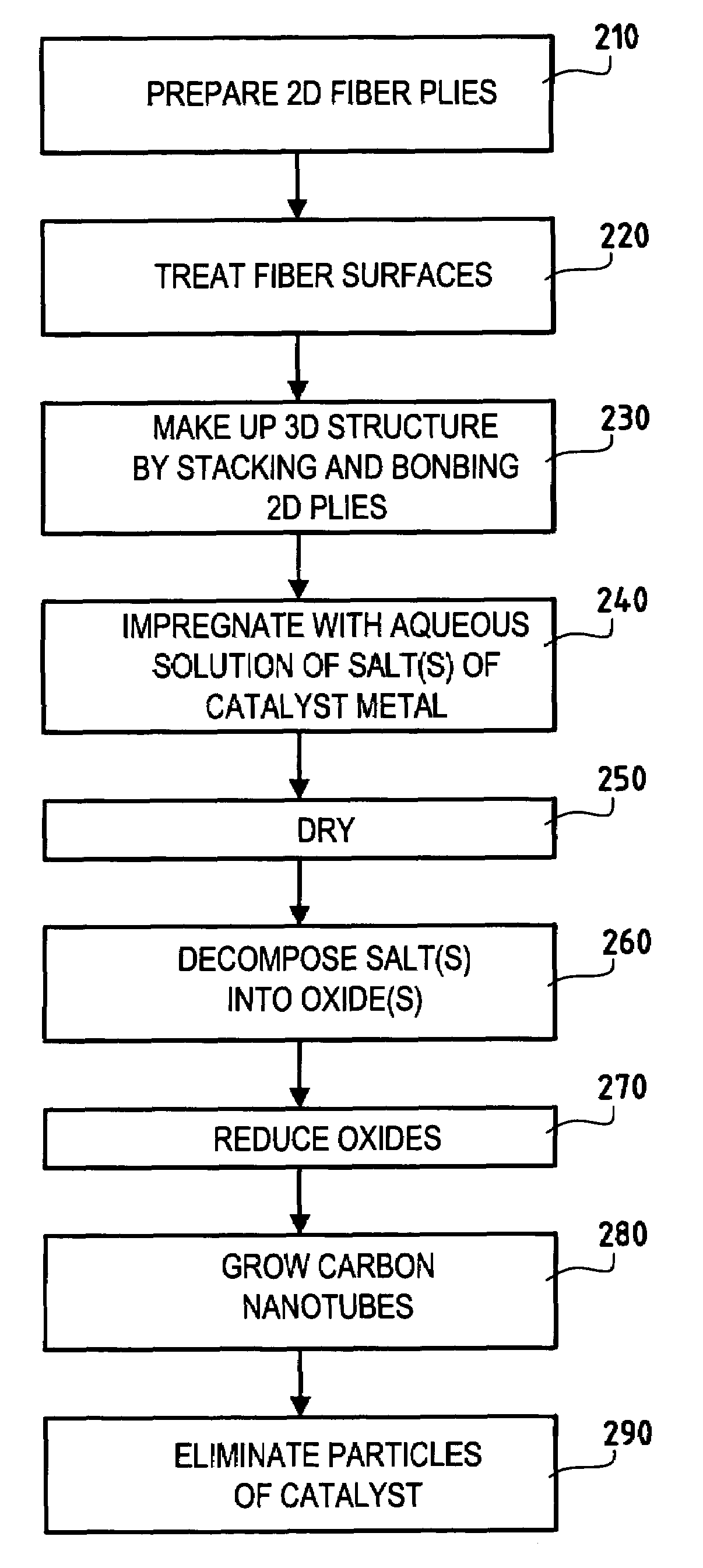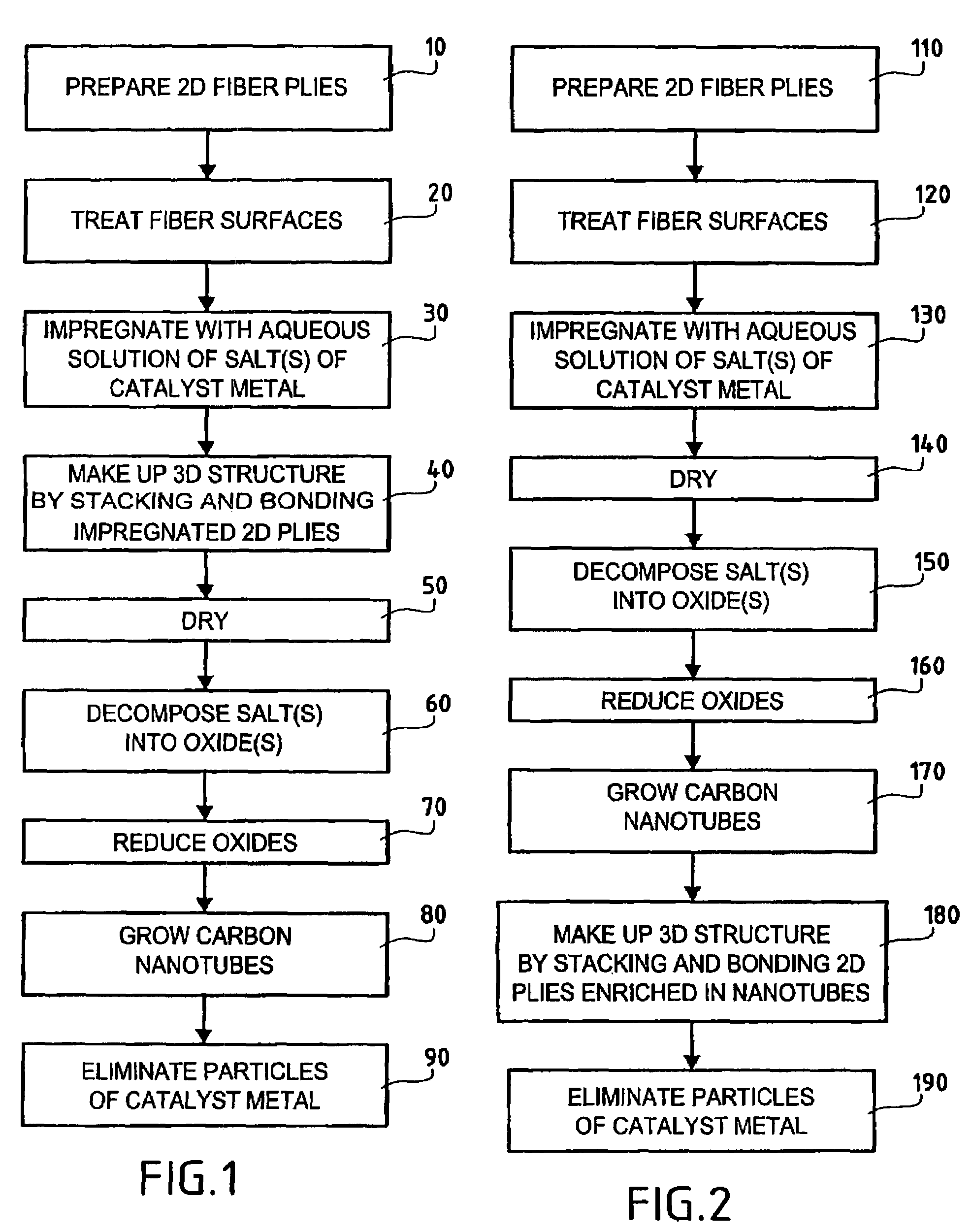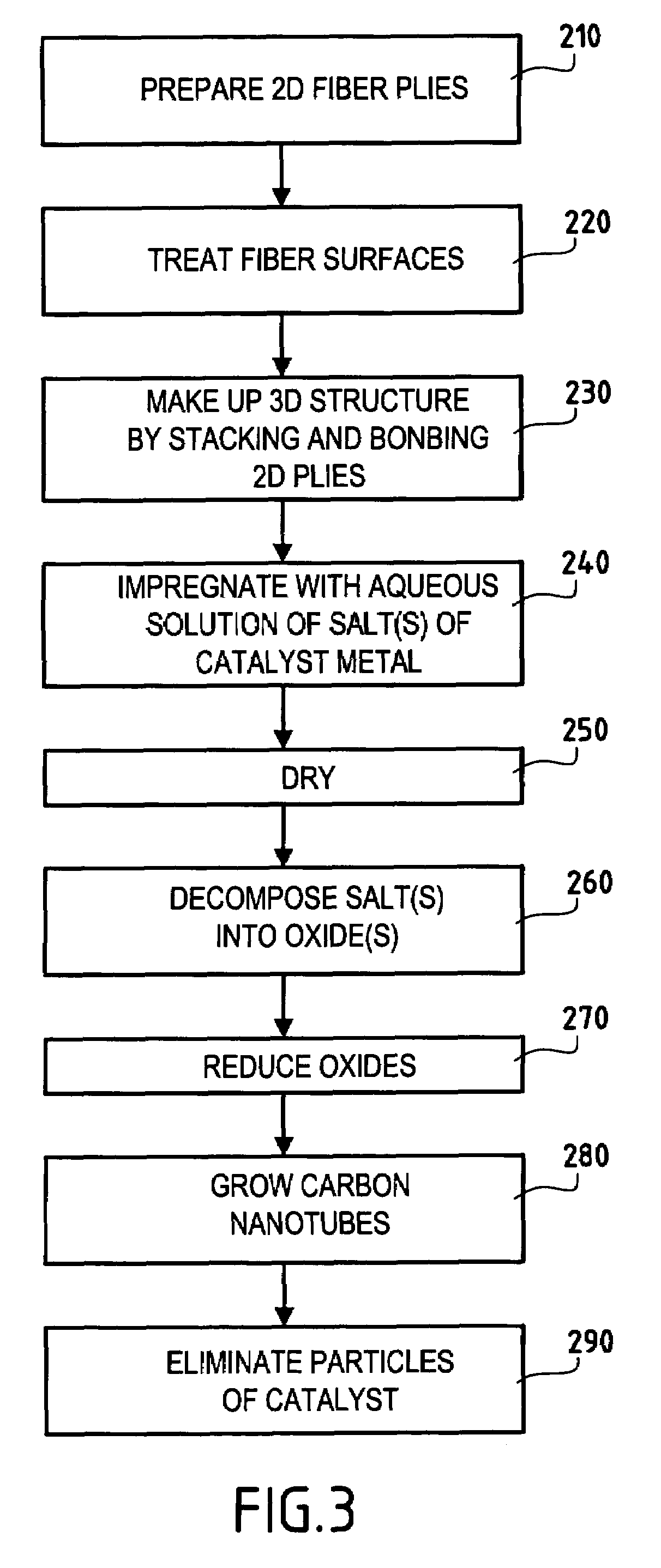Method of making a three-dimensional fiber structure of refractory fibers
a three-dimensional fiber and refractory fiber technology, applied in the field of porous three-dimensional (3d) fiber structure made of refractory fibers, can solve the problem of not being able to distribute fillers in the desired manner within the fiber structure, i.e. in uniform manner or in a manner, and achieve the effect of improving the method of fabricating parts and improving the properties of composite material parts
- Summary
- Abstract
- Description
- Claims
- Application Information
AI Technical Summary
Benefits of technology
Problems solved by technology
Method used
Image
Examples
example 1
[0115]Carbon cloth plies made of cellulose precursor that had been subjected to carbonization treatment at a temperature of up to 1200° C. were impregnated in a 0.2 molar aqueous solution of iron nitrate. Twenty plies impregnated in this way were stacked and needled to one another. The needling was performed progressively as increasing number of plies were stacked, so as to ensure that the needles penetrated to a substantially constant depth, as described in document U.S. Pat. No. 4,790,052.
[0116]The resulting moist 3D fiber structure was dried in air at 200° C. in a ventilated stove, which also caused the iron nitrate to decompose into oxide. The 3D fiber structure was introduced into an oven where the temperature was raised to 700° C. under an inert atmosphere (nitrogen) to avoid oxidizing the carbon. The oxide was then reduced by introducing a reducing atmosphere into the oven, said atmosphere comprising a mixture of equal volume fractions of ammonia gas and nitrogen for a period...
example 2
[0117]Carbon cloth plies of cellulose precursor of the same kind as in Example 1 were impregnated in a 0.05 molar aqueous solution of iron nitrate.
[0118]The plies were dried under air at 200° C. in a ventilated stove, thereby also causing the iron nitrate to decompose into oxide. The dried plies were introduced into an oven where the temperature was raised to 700° C. under an inert atmosphere (nitrogen). The oxygen was then reduced by introducing a reducing atmosphere into the oven constituted by a mixture of equal volume fractions of ammonia gas and nitrogen for a duration of 30 min. Thereafter, with the temperature being maintained at 700° C., a gas was introduced into the oven comprising acetylene diluted in nitrogen (1 volume of acetylene for 3 volumes of nitrogen) for a duration of 2 h. After cooling to ambient temperature under nitrogen, carbon nanotube growth on the carbon fibers of the plies was observed, and the measured increase in weight relative to the initial cloth plie...
example 3
[0121]The same procedure as in Example 2 was performed except that the cloth plies were impregnated with a 0.2 molar aqueous solution of nickel nitrate and the duration of carbon nanotube growth was extended to 10 h instead of 2 h. The measured increase in weight after the cloth plies had been enriched in carbon nanotubes was about 175%.
PUM
| Property | Measurement | Unit |
|---|---|---|
| friction coefficient | aaaaa | aaaaa |
| friction coefficient | aaaaa | aaaaa |
| specific surface area | aaaaa | aaaaa |
Abstract
Description
Claims
Application Information
 Login to View More
Login to View More - R&D
- Intellectual Property
- Life Sciences
- Materials
- Tech Scout
- Unparalleled Data Quality
- Higher Quality Content
- 60% Fewer Hallucinations
Browse by: Latest US Patents, China's latest patents, Technical Efficacy Thesaurus, Application Domain, Technology Topic, Popular Technical Reports.
© 2025 PatSnap. All rights reserved.Legal|Privacy policy|Modern Slavery Act Transparency Statement|Sitemap|About US| Contact US: help@patsnap.com



